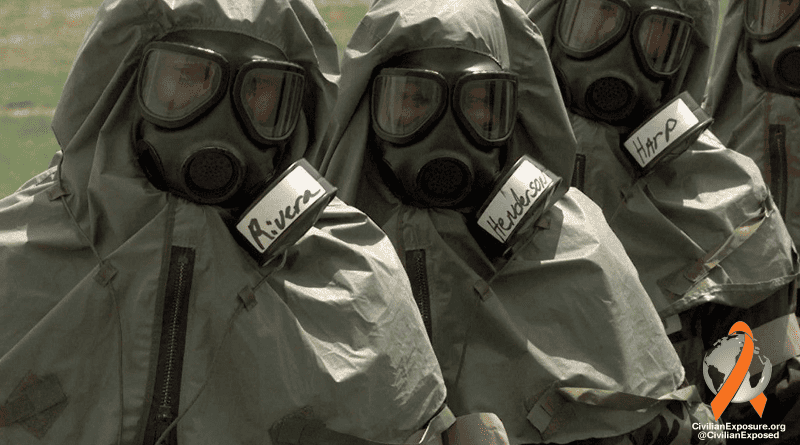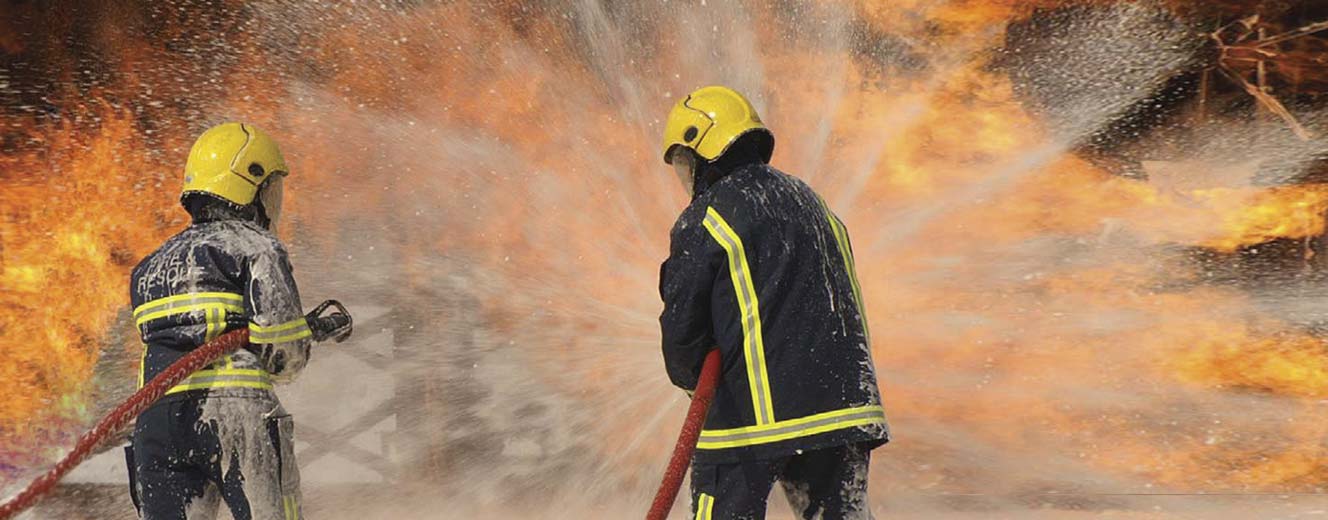
The Army Contaminates Fort Ord Region with PFAS and Downplays Health Impacts
(April 27, 2020) — The Army has revealed that two highly toxic chemicals, PFOS and PFOA were recently found in the groundwater at the old Fort Ord, near Salinas, California at 560 parts per trillion (ppt), which is 8 times higher than the EPA’s advisory level of 70 ppt. The chemicals are known to contribute to testicular, liver, breast, and kidney cancers, as well as a host of childhood diseases and abnormalities in the developing fetus.
Although the base closed 26 years ago, the presence of the “forever chemicals” at these levels provides a wake-up call to the public in the region that PFAS is present at harmful levels in the ground. Customers of California Water Service — Salinas should be especially cognizant of the potential for contamination. Groundwater from the base is reported to move in a northeasterly direction toward Salinas while the town’s water supply is derived largely from groundwater.
No federal or state maximum contaminant levels for PFAS chemicals in drinking water have been established. In February, 2020, however, the California State Water Resources Control Board lowered its “Response Level” to 10 parts per trillion (ppt) for PFOA and 40 ppt for PFOS. If a water system exceeds the response levels for these contaminants, the system is required to take the water source out of service or provide public notification within 30 days of the confirmed detection. Previously, the response level was 70 ppt for the total concentration of the two contaminants combined. The groundwater at Fort Ord contained 113 ppt of PFOA and 447 ppt of PFOS.
Because of the new regulations water systems throughout the state have been required to either shut down drinking water wells or treat the water so it is deemed safe to drink.
People in the Seaside-Salinas area who drink from private wells should be careful not to drink water containing PFAS. Neither the federal government not the state regulate well water.
A recent news story in the Monterey County Weekly omits the alarming analytical results while quoting a spokesperson for the Army saying there is little risk to public health from PFAS contamination at the base. It is not surprising that the Army or its contractors would be downplaying the threat to public health posed by the Army’s use of toxic firefighting foams during firefighting drills and in overhead foam suppression systems for over twenty years at Fort Ord.
“Fortunately, compared to other [Department of Defense] sites, the presence of PFAS is not that extensive,” says William Collins, environmental coordinator of the military’s local Base Realignment and Closure office. “The chemicals were not frequently used here and not in large quantities.”

Army firefighters train using foam aqueous film-forming foam, (AFFF) containing PFAS.
The paper provided a link to a 1,345-page draft report, by Ahtna Environmental, Inc., under a contract with the US Army. A closer look at the report details wide use of the substances and a greater threat to public health than the public is led to believe. Collins said, “Where we found PFAS, it is being removed.”
Perhaps Collins is referring to just PFOS and PFOA — two types of PFAS (per- and poly fluoroalkyl substances.) This, in itself, is a pretty tall order considering the amount of the AFFF used over the years and the distances the chemicals have likely traveled in underground plumes. The Ahtna report only provided the results of contamination for two PFAS chemicals while the Army, like the other branches of the military, is likely to have used dozens of the toxins in a variety of applications.
We were provided a glimpse of the contaminants poisoning the groundwater by the military when the Lahontan Regional Water Board tested the well water of a home in Victorville, California two years ago. The water was found to contain high levels of 25 separate PFAS chemicals. The home is located close to the shuttered George AFB which closed 28 years ago.
The public in Salinas and Seaside won’t learn about the exact levels of these chemicals in their groundwater or drinking water unless they are proactive. Certainly, they cannot rely on the Army to be candid. Public health professionals say people should not ingest more than 1 ppt of PFAS daily.
The Monterey County Weekly reported that the Army identified sites where more investigation is needed. The most obvious place to look more thoroughly is Site 10, the Burn Pit — Fire Training Area. Aqueous film-forming foam (AFFF) was used there for at least two decades. Typically, Army fire pits consisted of a roughly 100-foot diameter unlined crater. Typical fire training activity included dispersing drummed waste oils, solvents, contaminated oils and jet fuels until the ground was saturated and the substances formed a pool. Then firefighters would ignite the fuel and extinguish the fire using deadly AFFF.
It is not good for the environment.
The Army ought to take a closer look at the hangar in Building 507 because it is outfitted with a foam suppression system and the Army tested these overhead systems regularly. In the case of an aircraft fire in a hangar, or a routine test of the system, 17 feet of deadly foam can cover aircraft in two minutes.
When tens of millions of dollars invested in a single aircraft is at stake, it is not hard to imagine the financial considerations driving this extreme approach to protecting the property. The foam, containing the “forever chemicals,” easily snuffs out petroleum-based fires but it also contaminates groundwater, surface water, and sewer systems on a deadly scale when it is rinsed out of the hangar.
The Ahtna Environmental report says activation of the suppression system could have resulted in AFFF being discharged to surface drainage channels or entering the sanitary sewer system. To gain an idea of how these systems contaminate the environment, see this madness.
Fort Ord is a former United States Army post on Monterey Bay. It closed in 1994. Most of the fort’s land now makes up the Fort Ord National Monument, managed by the United States Bureau of Land Management while a small portion remains an active military installation under Army control designated as the Ord Military Community.
Eight wells were tested at the old fort, which closed down in 1994. Two were found to have PFOS/PFOA at levels of 120 and 334 parts per trillion. The water is poisoned.
These, and the remaining groundwater wells were demolished, along with the Northwest Treatment System. No further action on PFOS/PFOA was taken because the Army says the poisons are not migrating off base.
The demolition activity was completed in July 2017.
Source: Addressing Perfluorooctane Sulfonate (PFOS) and Perfluorooctanoic Acid (PFOA) Maureen Sullivan Deputy Assistant Secretary of Defense (Environment, Safety & Occupational Health) March 2018.
Contaminated Fort Ord. People with wells in the community may want to have them tested for PFAS, just to be safe.

Fort Ord Superfund Site
The 27,827-acre Fort Ord site is located in Monterey County, California. It was established in 1917 by the US Army as a maneuver area and field artillery target range. In 1991, Fort Ord was selected for decommissioning but the post did not formally close until 1994. Prior to closing in September 1994, the base’s primary mission was training infantry military personnel.
EPA placed the site on the Superfund program’s National Priorities List (NPL) in 1990. The site contained leaking petroleum underground storage tanks, a 150-acre landfill used to dispose of residential waste and small amounts of commercial waste generated by the base, a former fire drill area, motor pool maintenance areas, small dumpsites, small arms target ranges, an 8,000-acre firing range and other limited areas that pose threats from unexploded ordnance.
Following initial actions to protect human health and the environment, site investigations and long-term cleanup activities are ongoing. Groundwater is contaminated with volatile organic compounds (VOCs) in various locations. One of the contaminated groundwater plumes near the city of Marina migrated off site and has been remediated with no further action required. All groundwater treatment systems are in place and operational.
Soils in several vehicle maintenance and motor pool areas, a 150-acre landfill and some munitions response sites have been contaminated with chemicals that spilled onto the ground. In addition, soils at target ranges are contaminated with lead. These contaminated soils have been addressed, significantly reducing or eliminating the potential threat to public health.
Unexploded ordnance and munitions and explosives of concern on an 8,000-acre firing range/impact area and at limited on-site areas may pose safety hazards. Types of ordnance found at Fort Ord include artillery projectiles, rockets, hand grenades, land mines, pyrotechnics, bombs and other demolition materials.
The Army has an extensive site security program and they ensure that known munitions sites are fenced, posted with warning signs and off-limits to unauthorized people.
View a full list of contaminants of concern for this site.
Want to Know More?
https://cumulis.epa.gov/supercpad/cursites/csitinfo.cfm?id=0902783
MULTI-USE RANGE AREA — SOUTH
Unexploded Munitions and Ordnance Area
Soil: High Risk This site is the entire 8,000 acre inland impact area. Superfund remedy: soil excavation. .
Contaminants:
Beryllium and compounds 0.81 mg/kg
Arsenic 8.5 mg/kg
Antimony and compounds 3360.0 mg/kg
Copper and compounds 19900.0 mg/kg
Lead 43600.0 mg/kg
Fort Ord is included in the report “Bases and Facilities with Significant Historical US Nuclear Weapons or Naval Nuclear Propulsion Missions — 2002” Radioactive Compiled by Stephen I. Schwartz, 2002
https://www.brookings.edu/bombs-in-the-backyard/
Marina Coast Water District Utility Details Marina, California Serves: 31,218. https://www.ewg.org/tapwater/system.php?pws=CA2710017
Data available: 2012—2017 Source: Groundwater Contaminants Detected 8
EXCEED EWG HEALTH GUIDELINES [with] 16 Total Contaminants.
EWG’s drinking water quality report shows results of tests conducted by the water utility and provided to the Environmental Working Group by the California State Water Resources Control Board, as well as information from the US EPA Enforcement and Compliance History database (ECHO). For the latest quarter assessed by the US EPA (January 2019 — March 2019), tap water provided by this water utility was in compliance with federal health-based drinking water standards.
Legal does not necessarily equal safe. Getting a passing grade from the federal government does not mean the water meets the latest health guidelines. Legal limits for contaminants in tap water have not been updated in almost 20 years. The best way to ensure clean tap water is to keep pollution out of source water in the first place. The California Water Board did not test the Marina Coast Water District Utility’s water for PFOS/PFOA in 2019.
DoD’s Installation Restoration Program (IRP) Sites that have not Achieved Response Complete (RC) January 2018
https://www.denix.osd.mil/derp/home/documents/installation-restoration-program-report-to-congress-january-2018/
Key: DERA — Defense Environmental Restoration Account funds
BRAC — Base Realignment and Closure
My Fort Ord Exposures
The writer describes health problems he believes were caused by exposure at Fort Ord.
https://www.civilianexposure.org/my-fort-ord-and-fort-clayton-exposures/
Posted in accordance with Title 17, Section 107, US Code, for noncommercial, educational purposes.